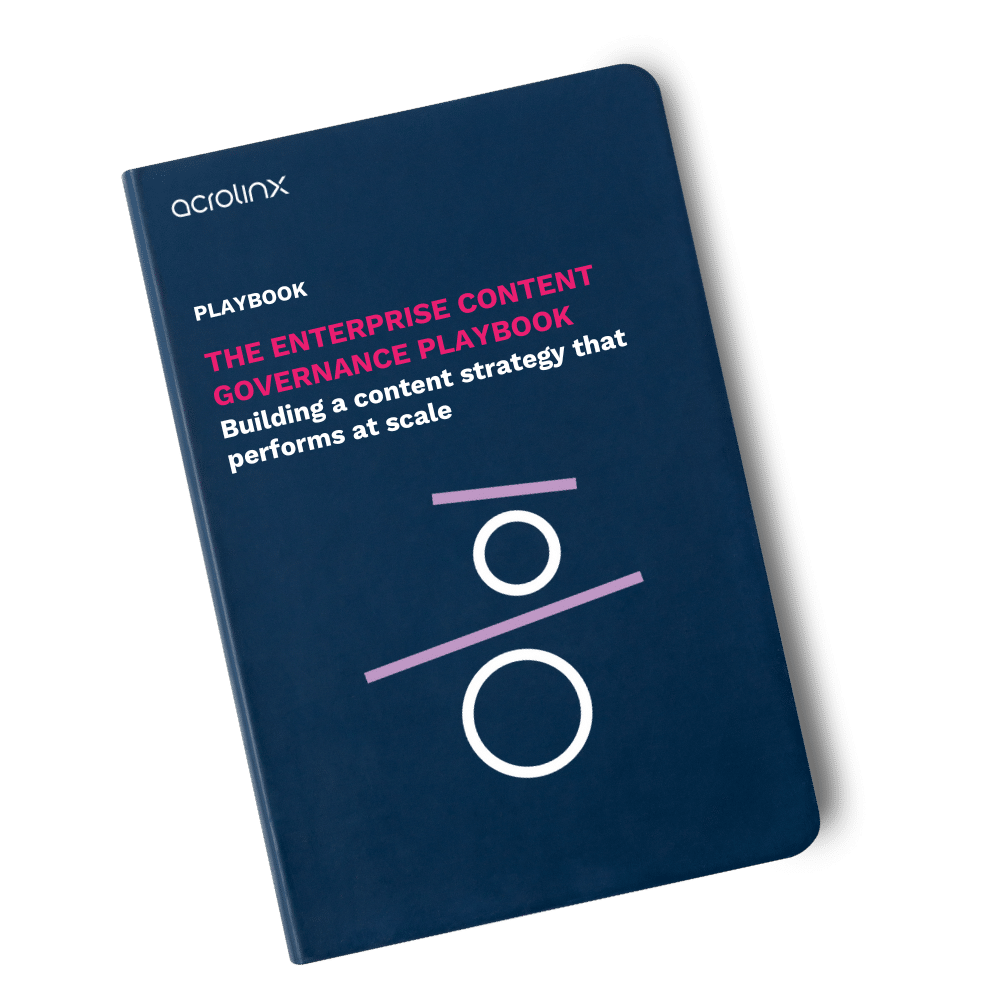The Role of Content Governance and Compliance in Technical Documentation

As a technical writer, have you ever had to race against a product launch deadline, meticulously detailing every feature and function?
Amidst the pressure to produce high volumes of content, crucial compliance details — safety warnings, regulatory information, or specific usage guidelines — might get overlooked or inconsistently applied. The result? Documentation that exposes your organization to legal risks, frustrates users with unclear instructions, or violates industry standards.
This scenario isn’t uncommon. In technical content creation, especially within large enterprises, making sure every piece is both accurate and compliant is a significant challenge.
In this piece, we’ll explore why content governance and compliance are indispensable for creating responsible technical documentation. Also, we’ll provide a roadmap to navigate critical aspects and build a framework for success.
Why content compliance matters in technical documentation
We all know that accuracy and clarity are important for building a successful content strategy. So is compliance. Creating documentation that follows relevant industry standards, legal requirements, brand guidelines, and internal policies isn’t just a best practice — it’s a fundamental responsibility. But why is this the case?
Non-compliant information in your organization’s content leads to:
- Significant legal penalties and liabilities: Failure to meet regulatory requirements results in hefty fines and legal action against the organization.
- Costly product recalls and rework: Incorrect or missing safety information leads to product malfunctions and the need for expensive recalls and documentation revisions.
- Damaged brand reputation and loss of customer trust: Inaccurate or non-compliant information erodes user confidence in both the product and the company.
- Increased risks to user safety: Omission of critical warnings or incorrect usage instructions leads to accidents and injuries.
- Jeopardized market access: In regulated industries, non-compliant documentation prevents products from being approved and sold in certain markets.
Prioritizing compliance into every facet of your content strategy, guided by a strong content governance framework, isn’t simply about following rules. It’s about safeguarding your organization, protecting your users, and upholding your reputation. Compliant content fosters trust, mitigates risk, and cultivates a culture of accountability throughout your content lifecycle.
The intersection between compliance and content governance
Compliance focuses on following specific rules and regulations. Content governance provides the overarching framework and processes to make sure all writers follow these rules and regulations consistently and effectively across all your technical documentation. Think of content governance as the engine that fuels compliance. When paired, it typically leads to great results.
An effective content governance model in technical documentation encompasses:
- Strategies and policies: Definines the high-level approach to the content creation process. What policies do you need to adhere to? Are there specific templates to follow?
- Standards: Establishes guidelines for terminology, style, brand identity, and formatting to support clarity and accuracy, which are foundational for compliance.
- Defined roles and responsibilities: Outlines who’s accountable for creating, reviewing, and ultimately approving documentation.
- Review processes: Implements workflows that embed compliance checks at relevant stages of the content lifecycle.
Without a well-defined content governance framework, achieving and maintaining consistent compliance becomes a reactive and often chaotic endeavor. This leads to wasted time and effort. It’s like trying to follow a complex set of rules without a clear instruction manual or designated supervisors.
If you proactively infuse compliance into the content governance process, you can move beyond simply reacting to regulations. Instead, you can build a system where creating compliant content is the standard operating procedure. This approach significantly reduces the risk of errors and creates a consistent brand image built on trust and reliability.
Discover how Acrolinx takes advantage of AI for automated content governance.
Main compliance challenges when creating technical documents
Maintaining high-quality content is challenging when you’re in an industry where regulations are constantly changing. You want to create documentation that’s evergreen. But as enterprises continue to evolve with AI, so do compliance standards. Several other factors contribute to these challenges:
- Volume and complexity of information: Technical documentation often involves intricate details and vast amounts of information. This makes it difficult to manually track and verify compliance for every single piece of content.
- Keeping up with evolving regulations: Laws, industry standards, and internal policies are constantly changing. Staying updated and making sure to revise all relevant documentation accordingly is tough on your content team.
- Multiple writers and contributors: When various individuals or teams are part of the content processes, maintaining a consistent understanding and application of compliance requirements becomes more complex. Different interpretations lead to inconsistencies and potential non-compliance.
- Legacy content: Organizations often have a large amount of existing content that may not have been created with current compliance rules or regulations in mind.
- Lack of centralized systems and processes: Without a well-defined content governance plan and supporting technologies, tracking and managing compliance across systems and workflows can be inefficient and error-prone.
- Maintaining consistency across languages: For global organizations, translating technical documentation while maintaining compliance adds another layer of complexity. Making sure that the translated content accurately reflects all necessary warnings and regulatory information is crucial.
How to build a content governance model for compliance
1. Standardize content guidelines and templates
Build a repository of all your critical company documentation. This should include a terminology database, style and brand guidelines, compliance regulations, and any other important written documents. By providing your writers with pre-approved templates and style guides that have compliance baked in, you minimize the risk of errors and inconsistencies from the outset. Loop in subject-matter experts to help finalize these essential documents.
Need help with developing a knowledge management strategy? Check out this guide!
2. Implement AI-powered compliance monitoring
Let’s face it. Manually reviewing large amounts of technical documentation for compliance is time-consuming and prone to human error. Implementing AI-powered compliance monitoring tools significantly improves efficiency and accuracy.
These tools can be configured to automatically scan content for adherence to predefined rules, highlighting potential compliance issues in real-time. This allows writers to address concerns proactively. It ensures compliance across all documentation. This includes identifying deviations from standardized terminology or missing required warnings.
3. Establish approval workflows and version control
Implementing well-defined approval workflows with built-in compliance checks is crucial. Designated subject-matter experts and legal or compliance teams should review and approve technical documentation before it’s published. Alternatively, use content governance software to find and correct language that sets compliance at risk.
In addition, a version control system is essential for tracking changes and making sure that the latest compliant version of each document is always accessible and in use. This also provides an audit trail of compliance-related modifications.
4. Train teams on content governance best practices
Even with the best guidelines and tools, a content governance framework for compliance will only be effective if your teams understand and use it. Comprehensive training on the following aspects is vital:
- Content governance policies
- Documentation standards
- Compliance requirements specific to your industry
- The correct use of any supporting technologies
Regular refresher trainings help reinforce best practices and keep teams updated on any changes in regulations or internal policies.
Reimagine technical content operations with Acrolinx
Enforcing brand consistency, strong editorial guidelines, and compliance standards become a whole lot easier when you have a digital tool to work tirelessly in the background for you. It frees your team members up from meticulous review processes and allows them to focus more on creating content.
Acrolinx offers a strong AI-powered platform that directly addresses the challenges of maintaining compliance and consistency in technical documentation at scale. Its main features provide valuable support throughout the content lifecycle:
- Terminology management and checking: Acrolinx enforces the use of approved terminology, meaning that all terms are accurate and consistently applied across all documentation. This is crucial for avoiding ambiguity and meeting industry standards. It helps prevent your writers from referring to the same concept in multiple different ways.
- Style guide enforcement: Our software uses AI to check content against your organization’s style guide. It helps safeguard a consistent tone, voice, formatting, and the correct application of mandatory warnings and disclaimers required for compliance.
- Real-time guidance: Acrolinx provides writers with immediate feedback on potential compliance violations and style inconsistencies directly within their authoring environment, enabling proactive correction and reducing errors.
- Automated checks: Our automation capabilities allow organizations to regularly check their whole content repositories, to highlight compliance issues and other errors in legacy content. This allows writers to adjust problematic content, without the need to manually review all legacy content. And more, teams can add Acrolinx to their technical documentation publication processes. As a quality gate, Acrolinx blocks content that doesn’t follow the rules from publication, to mitigate content risk.
- Content scoring and reporting: Acrolinx provides a score based on linguistic quality and compliance metrics like readability scores. Our reporting offers insights into areas for improvement and helps you track your progress towards higher quality and more compliant documentation.
Ready to bring harmony to your organization’s content chaos? Download our eBook to see how we can help you develop a more robust, compliant content governance strategy.
Are you ready to create more content faster?
Schedule a demo to see how content governance and AI guardrails will drastically improve content quality, compliance, and efficiency.
The Acrolinx Team






